Related Research Articles
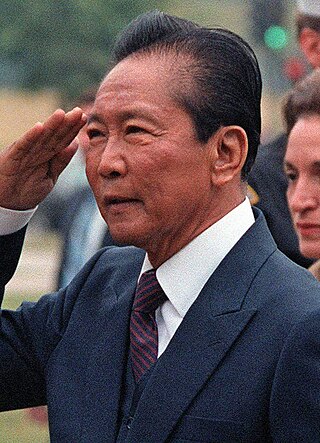
Ferdinand Emmanuel Edralin Marcos Sr. was a Filipino politician, lawyer, dictator, and kleptocrat who served as the tenth president of the Philippines from 1965 to 1986. He ruled under martial law from 1972 until 1981 and kept most of his martial law powers until he was deposed in 1986, branding his rule as "constitutional authoritarianism" under his Kilusang Bagong Lipunan. One of the most controversial leaders of the 20th century, Marcos's rule was infamous for its corruption, extravagance, and brutality.
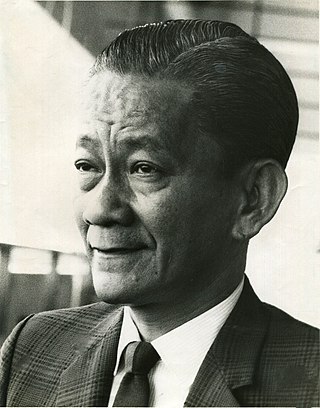
Sergio "Serging" Veloso Osmeña Jr. was a Filipino politician who served as a Senator of the Philippines, and ran against Ferdinand Marcos in the 1969 Philippine Presidential election. He was the son of Sergio Osmeña, the fourth president of the Philippines. His son, Sergio "Serge" Osmeña III, was also a Senator of the Philippines.
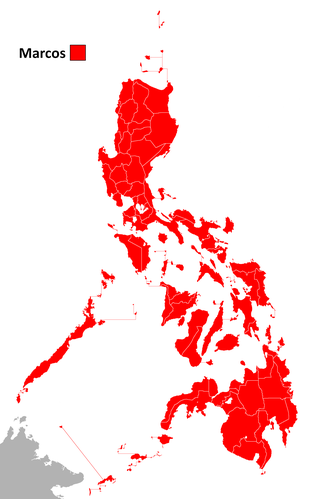
The 1981 Philippine presidential election and national referendum was held on June 16, 1981. President Ferdinand E. Marcos of the Kilusang Bagong Lipunan (KBL) defeated retired general and World War II veteran Alejo Santos of the Nacionalista Party in a landslide victory. Most opposition parties boycotted the election as a sign of protest over the 1978 election for the Interim Batasang Pambansa, which they condemned as fraudulent. At the same time, a national referendum was held on the question in holding elections for barangay elections in 1982.

A senatorial election was held on November 11, 1969 in the Philippines. While incumbent President Ferdinand Marcos won an unprecedented second full term as President of the Philippines, and his running mate, incumbent Vice President Fernando Lopez was also elected to a third full term as Vice President of the Philippines, their Nacionalista Party-mates also won six of the eight contested seats in the Philippine Senate increasing their majority in the Senate.
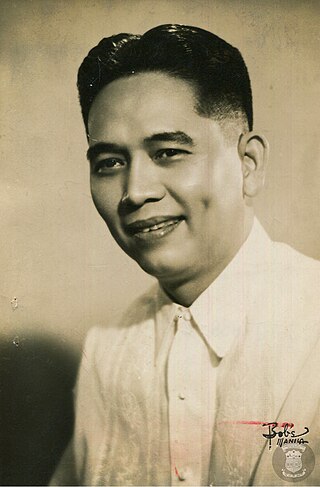
A senatorial election was held on November 9, 1965 in the Philippines. The Nacionalista Party wrestled back control of the Senate; originally a Liberal, Senate President Ferdinand Marcos defected to the Nacionalistas, became their presidential candidate and won this year's election.

Eva Estrada Kalaw was a Filipina politician who served as a senator in the Senate of the Philippines from 1965 to 1972 during the presidency of Ferdinand Marcos. She was one of the key opposition figures against Marcos' 20-year authoritarian rule and was instrumental in his downfall during the People Power Revolution. As a senator, she wrote several laws relating to education in the Philippines, such as the salary standardization for public school personnel, the Magna Carta for Private Schools, the Magna Carta for Students, and an act to institute a charter for Barrio High Schools. She was also among the Liberal Party candidates injured during the Plaza Miranda bombing on August 21, 1971.

The history of the Philippines, from 1965 to 1986, covers the presidency of Ferdinand Marcos. The Marcos era includes the final years of the Third Republic (1965–1972), the Philippines under martial law (1972–1981), and the majority of the Fourth Republic (1981–1986). By the end of the Marcos dictatorial era, the country was experiencing a debt crisis, extreme poverty, and severe underemployment.
This list of presidential elections in the Philippines includes election results of both presidential and vice presidential elections since 1899 with the candidates' political party and their corresponding percentage.

A senatorial election was held on November 8, 1971 in the Philippines. The opposition Liberal Party won five seats in the Philippine Senate while three seats were won by the Nacionalista Party, the administration party; this was seen as a consequence of the Plaza Miranda bombing on August 21, 1971, which wounded all of the Liberal Party's candidates and almost took the lives of John Henry Osmeña and Jovito Salonga. Their terms as senators were cut short as a result of the declaration of martial law by President Ferdinand Marcos on September 23, 1972.

The Fourth Philippine Republic, also known as the FourthRepublic of the Philippines was established after Ferdinand Marcos Sr won the June 16, 1981, Philippine Presidential Election. Marcos announced the beginning of the Fourth Republic on June 30, during his inauguration speech. On February 25, 1986, due to the 1986 EDSA Revolution, Marcos ended into exile in Hawaii and Corazon Aquino became the 11th president of the Philippines. The Fourth Republic would come to an end under Aquino's leadership, and the Fifth Republic would commence with the adoption of a new constitution.

The Nacionalista Party is the oldest political party in both the Philippines and in Southeast Asia in general. It is responsible for leading the country throughout most of the 20th century since its founding in 1907; it was the ruling party from 1935 to 1946, 1953–1961 and 1965–1972.
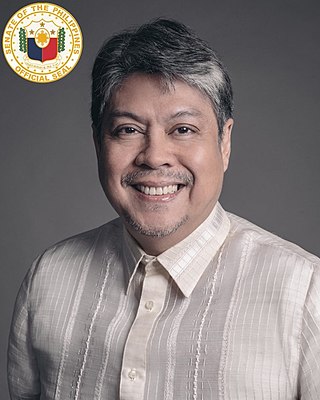
The 2010 election of members to the Senate of the Philippines was the 30th election to the Senate of the Philippines. It was held on Monday, May 10, 2010, to elect 12 of the 24 seats in the Senate. The winners in this election joined the winners of the 2007 election to form the 15th Congress of the Philippines. The senators elected in 2007 will serve until June 30, 2013, while the senators elected in this election will serve up to June 30, 2016. The 2010 presidential election, elections to the House of Representatives as well as local elections occurred on the same date. The Philippines uses plurality-at-large voting for seats in the Senate: the twelve candidates with the highest number of votes wins the twelve seats up for election.
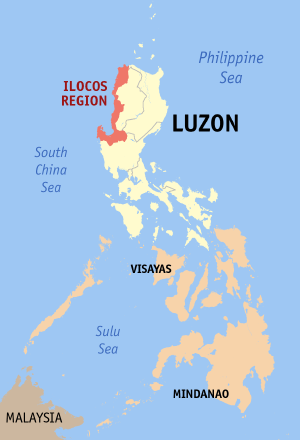
Elections were held in the Ilocos Region for seats in the House of Representatives of the Philippines on May 10, 2010.

The 1965 Philippine presidential and vice presidential elections were held on November 9, 1965. Incumbent President Diosdado Macapagal lost his opportunity to get a second full term as president of the Philippines to Senate President Ferdinand Marcos. His running mate, Senator Gerardo Roxas, lost to former vice president Fernando Lopez. Emmanuel Pelaez, who resigned in the Cabinet and from the Liberal Party, then sought the Nacionalista Party presidential nomination and lost it to Marcos, did not run for vice president and instead ran in the House of Representatives as an independent. An unprecedented twelve candidates ran for president; however, nine of those won 200 votes or less.

The 1946 Philippine presidential and vice presidential elections were held on April 23, 1946, according to Commonwealth Act No. 725. Incumbent president Sergio Osmeña ran for a full term but was defeated by Senator Manuel Roxas. Meanwhile, senator Elpidio Quirino defeated fellow senator Eulogio Rodriguez to become vice president.

The Solid North refers to the regional voting bloc of the northern provinces of the Philippines for politicians of Ilocano descent, more particularly the Marcos family and their allies, and also economic issues affecting the Ilocanos in general such as the tobacco industry. Often included in Solid North are the provinces in the Ilocos Region, Cordillera Administrative Region (CAR), and Cagayan Valley. The regions are considered to be a conservative/right-wing bastion for the country.

Ferdinand Marcos was inaugurated to his first term as the 10th president of the Philippines on December 30, 1965. His inauguration marked the beginning of his two-decade long stay in power, even though the 1935 Philippine Constitution had set a limit of only two four-year terms of office. Marcos had won the Philippine presidential election of 1965 against the incumbent president, Diosdado Macapagal.

The 21-year period of Philippine economic history during Ferdinand Marcos’ regime – from his election in 1965 until he was ousted by the People Power Revolution in 1986 – was a period of significant economic lows.

Ferdinand Marcos' second term as President of the Philippines began on December 30, 1969, as a result of his winning the 1969 Philippine presidential election on November 11, 1969. Marcos was the first and last president of the Third Philippine Republic to win a second full term. The end of Marcos' second term was supposed to be in December 1973, which would also have been the end of his presidency because the 1935 Constitution of the Philippines allowed him to have only two four-year terms. However, Marcos issued Proclamation 1081 in September 1972, placing the entirety of the Philippines under Martial Law and effectively extending his term indefinitely. He would only be removed from the presidency in 1986, as a result of the People Power Revolution.
The 1969 Philippine balance of payments crisis was a currency crisis experienced by the Philippine economy as a result of heavy government spending linked to Ferdinand Marcos' campaign for his second presidential term in 1969. It was notable for being the first major economic crisis of the Marcos Administration, and for triggering the social unrest which was the rationalization for the proclamation of martial law in 1972.
References
- 1 2 3 4 Magno, Alexander R., ed. (1998). "Democracy at the Crossroads". Kasaysayan, The Story of the Filipino People Volume 9:A Nation Reborn. Hong Kong: Asia Publishing Company Limited.
- 1 2 3 Nick, Joaquin (2013). Reportage on the Marcoses, 1964-1970. Mandaluyong, Philippines: Anvil Publishing. ISBN 9789712728174. OCLC 853430289.
- ↑ Parsa, Misagh (2000-08-17). States, Ideologies, and Social Revolutions: A Comparative Analysis of Iran, Nicaragua, and the Philippines. Cambridge University Press. ISBN 9780521774307.
- ↑ Patino, Patrick; Velasco, Djorina. "Election Violence in the Philippines" (PDF). Friedrich-Ebert-Stiftung.
- ↑ editorial-protecting-vote-459796 (2016-02-29). "Editorial: Protecting the vote". Sunstar. Retrieved 2018-05-22.
{{cite news}}: CS1 maint: numeric names: authors list (link) - 1 2 Conrado., De Quiros (1997). Dead aim : how Marcos ambushed Philippine democracy. Foundation for Worldwide People Power (Manila, Philippines). Pasig: Foundation for Worldwide People's Power. ISBN 9719167033. OCLC 39051509.
- 1 2 Burton, Sandra (1989). Impossible Dream: The Marcoses, the Aquinos, and the Unfinished Revolution . Warner Books. ISBN 0446513989.
- 1 2 3 Balbosa, Joven Zamoras (1992). "IMF Stabilization Program and Economic Growth: The Case of the Philippines" (PDF). Journal of Philippine Development. XIX (35).
- 1 2 3 Cororaton, Cesar B. "Exchange Rate Movements in the Philippines". DPIDS Discussion Paper Series 97-05: 3, 19.
- 1 2 Diola, Camille. "Debt, deprivation and spoils of dictatorship | 31 years of amnesia". The Philippine Star. Archived from the original on 26 June 2017. Retrieved 2 May 2018.
- ↑ Balisacan, A. M.; Hill, Hal (2003). The Philippine Economy: Development, Policies, and Challenges. Oxford University Press. ISBN 9780195158984.
- ↑ Dohner, Robert; Intal, Ponciano (1989). "Debt Crisis and Adjustment in the Philippines". In Sachs, Jeffrey D. (ed.). Developing country debt and the world economy. Chicago: University of Chicago Press. ISBN 0226733386. OCLC 18351577.
- ↑ "In Focus: Edie Romero's "Passionate Strangers" Opens Festival of Restored Filipino Films". National Commission on Culture and the Arts (Philippines) . July 12, 2004. Retrieved April 26, 2017.